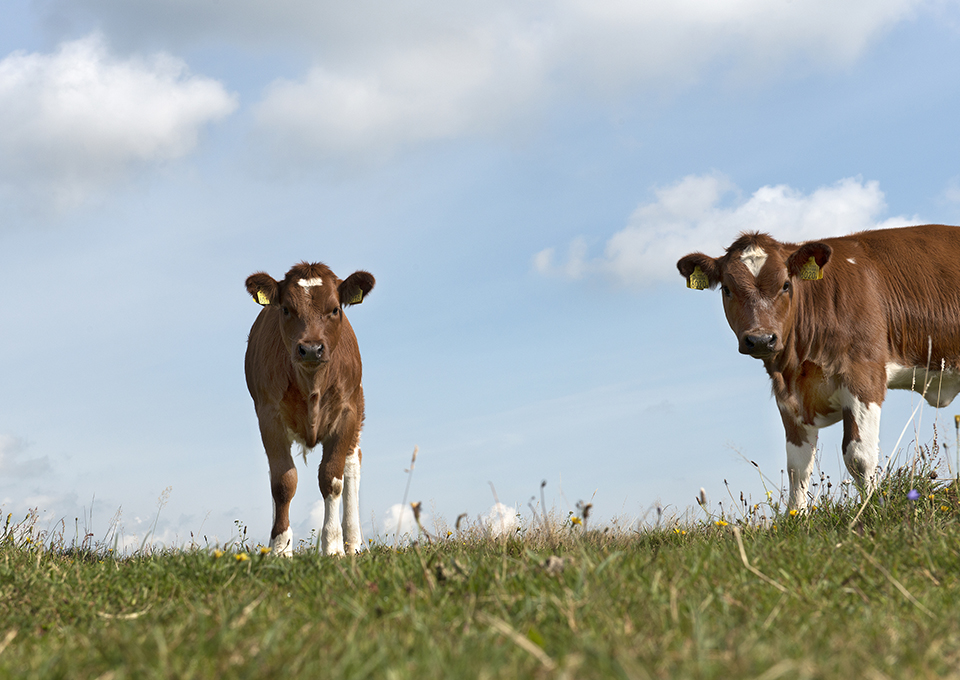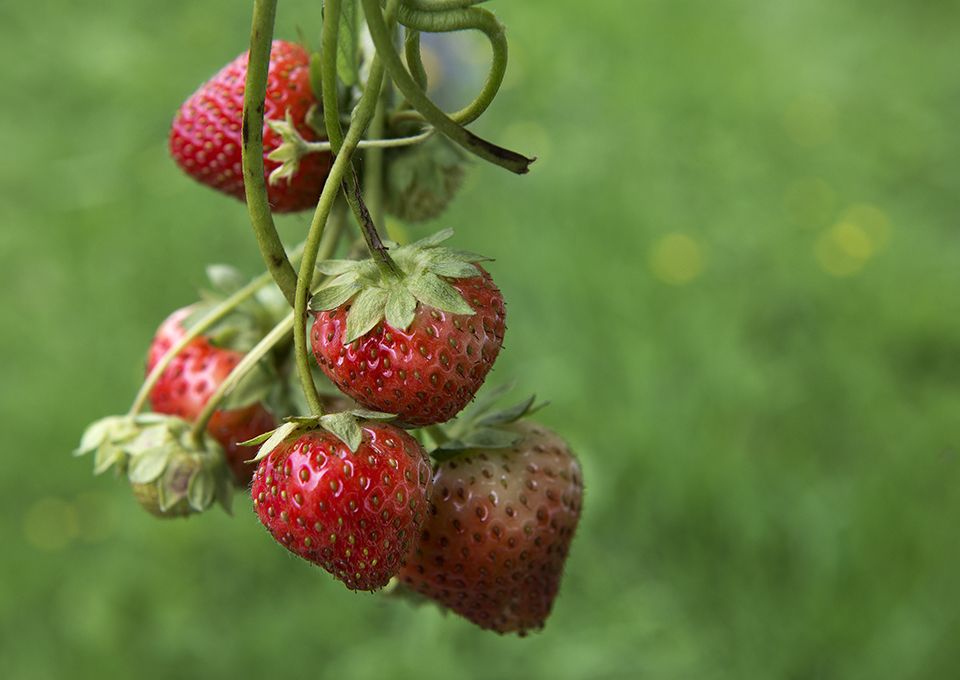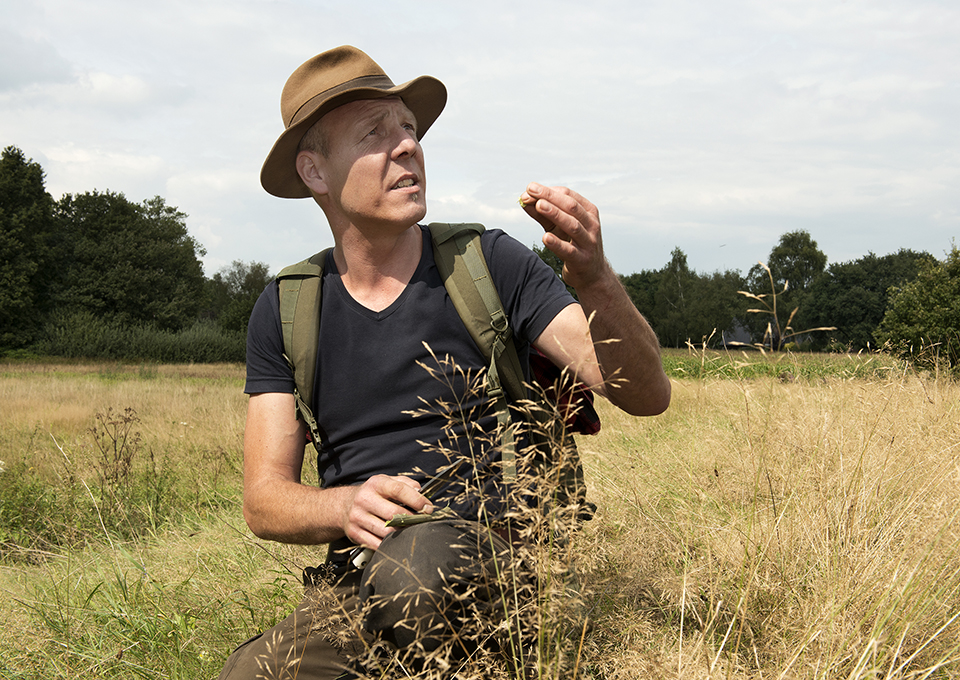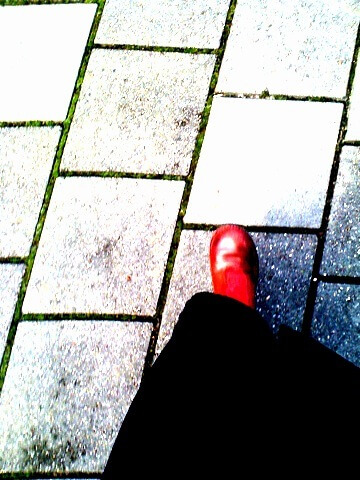Imagine, you would like to spot wild animals. And make a survival trek through the woods. And imagine that you survive the survival trek and would like to celebrate that in a culinary way. With creamy cheeses, aromatic strawberries and a glass of exceptional rosé. Where springs to mind? Well? Exactly! You’re thinking about the Vechtdal.
In the meantime, Remco the bull has made way for Nico the bull, who grazes now with his 60 wild red-haired ladies and their offspring in the Vechtdal. Brandrode – which literally means fire-red – is an old Dutch breed that lives outdoors all year round. Simone Jansen is the owner of this wild livestock, together with her husband René. She takes us along on cow safari along the Vecht on a chugging 1956 tractor.
The fact that the Brandrode breed is grazing there is a coincidence. The cattle farm, which has been in the family for generations, could not expand because the land borders on a nature area. So they had to look for another economic challenge when they took over the business.
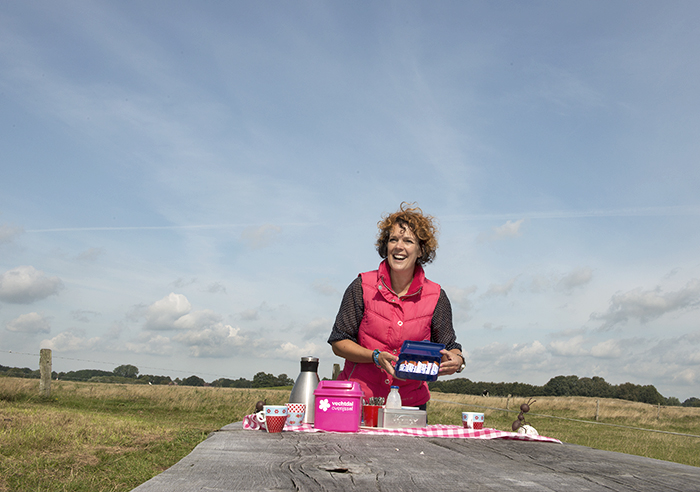
Simone: “We went in search of a cow that could live outdoors, without a stall. We ended up going for an old Dutch breed: the Brandrode cow. They graze in unfertilized meadows full of flowers, drink their water out of the Vecht and live as they have always done. You can taste that in the meat.” They are very special ladies, that’s why I really wanted people to make their acquaintance and I started with the cow safari, where I talk about the animals and their environment and we stop for a picnic on the banks of the Vecht.”
At the woods, the tractor pauses. She points. “That’s where they go when they’re calving, they withdraw.” Then she points back towards the meadow. “There is a strict hierarchy in the herd. Those ones in the middle are the leaders. The bull has no say at all, he just has to get on with his business during the six months he stays among the ladies.” She laughs heartily. Her story is interspersed with plays on words such as Kalverstraat and cowlinary.

The tractor chugs further towards the cows lying in the sun close to the edge of the wood. Young calves, not even 10 days old, are out for the count in the grass and don’t even look up. “In principle, the cows are not used to people because they still live in the wild. If we were to get out of the wagon, they would take off.” But when the photographer gets down flat on the ground, fear doesn’t seem to be much of a problem. They are more curious than afraid, and the calves in particular slowly come closer. When the camera flashes, their little bodies shudder in fright.
The ladies graze for seven years beside the Vecht before they are slaughtered. The skin is used for a fashion line of bags and belts. “Haute cowture”, grins Simone. One of the places the meat ends up is with Vechtdal chef Johan Drenth who prepares local dishes at special locations.
“We have so many attractive and delicious things in this region”, he tells us in the evening in the Mien Ruys gardens he’s using as a pop-up restaurant to let us make acquaintance with local rosé, goat’s cheeses, sausage made from Mangalitza, a breed of woolly pig, organic strawberries from RozeMarrie and chutneys and pickled onions.
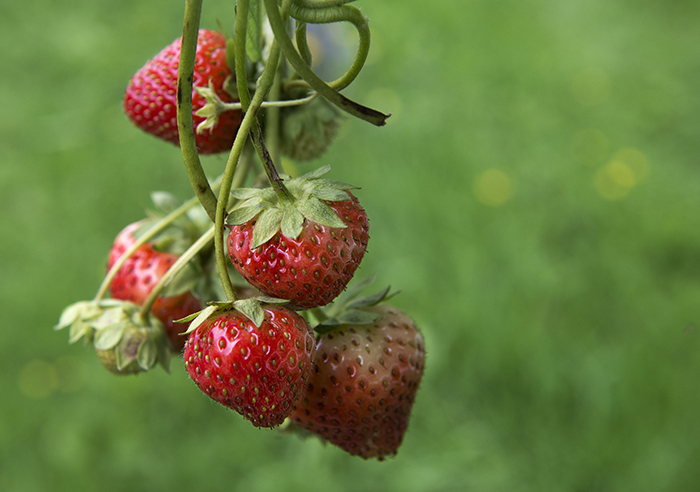
Like the Brandrode cows, Martin Overweg also regularly lies in the meadows and woods of the Vechtdal. Without any red-haired ladies, we must add. He is the owner of the Klashorst nature campsite, but he makes tracks with us in his capacity as “bush crafter”. Or rather off the beaten track. We walk right across the meadows into the wood, where we are introduced to nature’s chemist. What we should smear for wasp stings, how to make a natural plaster, which herbs there are, and we pretty much get to taste a Dutch Sambal Oelek taken from nature.
Once we have gathered enough, we pitch camp. Martin explains how we can make a good place for a fire in the humus-rich and therefore flammable Vechtdal. After that, we cut poles for the cabin, cheating a bit, because Martin has brought a rainproof canvas this time. Normally you have to build the cabin yourself.
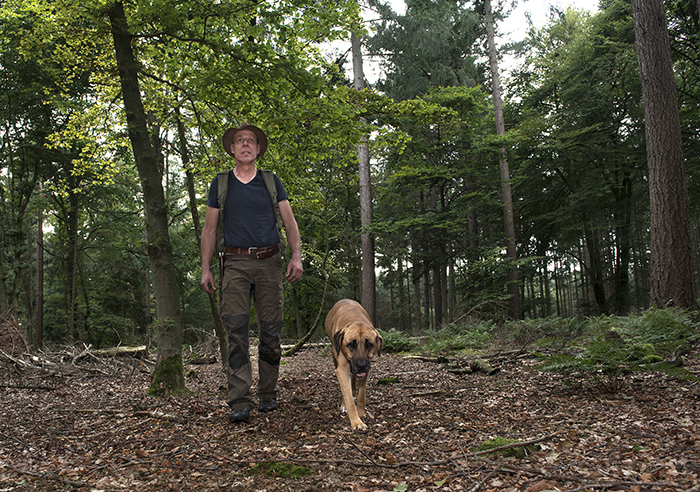
While the woolly-pig sausages on sticks are lying in the flames and we’re enjoying the herbal tea, suddenly a man on a piebald horse rides into the encampment. Indiana Jones in the Vechtdal. Attracted by the smoke signals, he has come to make sure we’re not causing any damage to nature, but when he sees Martin, he goes on his way again. When we are finished surviving, we carefully wipe out all our traces. No-one can see we were here. And what about us? We’re on our way to Rheeze by now.
There, by a village green, lies B&B de Rheezerkamer. From the luxurious design sitting room with void, once a stall, with a glass of wine, we look out on the sheep grazing behind the farm. Behind that, the Vecht flows slowly in the direction of Zwolle.
Relaxation after a day full of gruelling activities. By now, we know they do exciting things in the valley of the Vecht. It’s time the rest of the world knows.
Text: Anneke de Bundel – Images: Nicole Franken
Translation: Christine Gardner
This feature came about on the invitation of Vechtdal Overijssel
More of the Netherlands? Do read:
Vechtdal pratical:
- Cow safari de Vechtdalhoeve
- Bushcrafting Camping de Klashorst
- Strawberries RozemaArrie
- B&B de Rheezerkamer
- Gardens Mien Ruys


